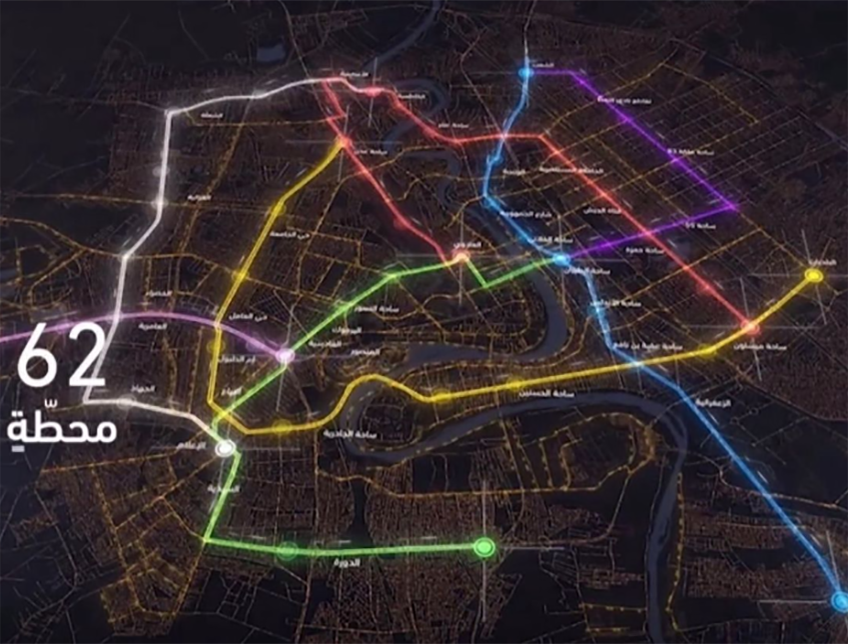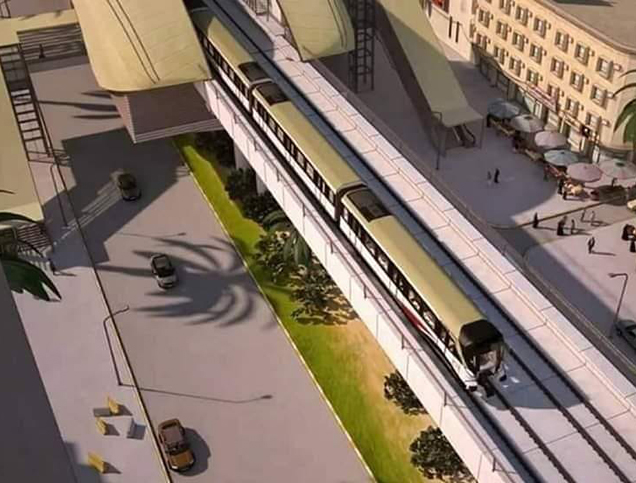
Close

Approach Words: Integrated City, Sustainability, Urban Livability
Public Policy Instruments: Financial Mechanism, Organization, Physical Intervention, Planning
Baghdad Metro, also called Baghdad Elevated Train (BET),1 is a public transportation project2 and Iraq’s first elevated and automated “driverless” metro in the capital city of Iraq, which has a population of over 7 million people.3 Upon completing its various lines, the network will cover more than 85% of the city and its suburbs,4 with the capacity to transport nearly 5 million passengers daily.5 The project will connect central Baghdad with newer cities under implementation: Al-Jawahiri City to the west of Baghdad, Ali Al-Wardi City to the south of Baghdad, and New Al-Sadr City to the east of Baghdad.6
Through this project, the Mayoralty of Baghdad aims to accommodate the city’s increasing transportation needs7 and alleviate traffic congestion in the capital city8 caused by rapid growth.9 By decreasing the levels of hydrocarbons in the atmosphere caused by car exhaust emissions,10 the project seeks to enhance the city’s environmental quality.

Title: Baghdad Metro Lines Map.
Source: Click Here

Title: Distribution of the Proposed 62 Station of Baghdad Metro.
Source: Click Here

Title: A three-dimensional view shows an elevated section of Metro Baghdad.
Source: Click Here

Title: Proposed Elevated Station for the Metro Project.
Source: Click Here
The metro comprises a network of seven lines that cover a total distance of 148 kilometers, connecting all residential areas, key institutions, and landmarks, including Baghdad International Airport.11 It will consist of 62 stations,12 including underground, surface, and elevated sections;13 this enables the railway network to adapt to the diverse urban landscapes of the city. The seven proposed lines are as follows:
The network will operate at speeds ranging from 80 to 140 kilometers per hour, employing an automated digital metro system powered by electricity and supported by various means of communication.21 Some sections of the railway network will also run through tunnels up to 20 meters deep to avoid conflicts with streets and other municipal infrastructure lines.22



Contractor/Implementer
The project includes the development of four train maintenance workshops and depots, two control centers, and power facilities. Each train will feature a “gold class” carriage, a carriage dedicated solely to women and children, and a carriage for tourists. Each carriage will be designed to be accessible to passengers with reduced mobility.23
The National Investment Commission and Mayoralty of Baghdad initiated the Project.24 A consortium including the Malaysian company HSS Engineers Berhad and ConsultantHSS from UAE is responsible for designing the project master plan.25
The project will be developed under the DBOMFT (Design, Build, Operate, Maintain, Finance, and Transfer) ownership model, with bids submitted in April 2024.26 Twenty-six multinational corporations from China, India, Germany, Italy, Spain, and Qatar have shown interest in participating in the metro project’s execution.27 The estimated total cost of the project is $2.5 billion.28
Project Link
Endnotes
References